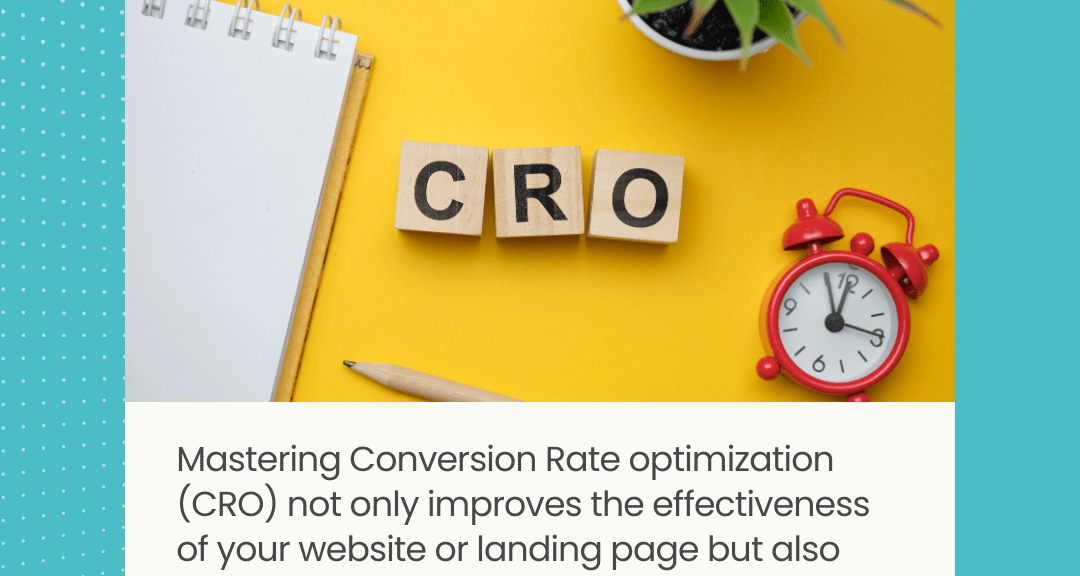In the competitive digital landscape, the ultimate victory lies not just in attracting visitors to your website or landing page but, more critically, in converting these visitors into active participants in your sales funnel. This is where Conversion Rate optimisation (CRO) shines: it’s a methodical process aimed at boosting the proportion of visitors to your website or landing page who complete a preferred action, whether that’s making a purchase, subscribing to a newsletter, or completing a form.
A Closer Look at Conversion Rate Optimisation (CRO):
In its essence, CRO is a data-driven methodology focused on understanding how users move through your website, what actions they take, and what’s impeding their progress towards becoming customers. It’s a combination of art and science, requiring the ability to empathise with your target audience while leveraging analytical tools to identify areas for improvement.
Why is CRO Important?
CRO holds an invaluable place in digital marketing because it allows businesses to maximise the value of their existing traffic. By fine-tuning the user experience, businesses can encourage more visitors to complete desired actions, leading to improved business outcomes without the necessity for additional advertising expenditure.
Key Strategies for Effective CRO:
- Perform User Research:
Understanding your users needs, motivations, and behaviours is paramount. Use tools like surveys, user interviews, and user testing to gather data about your audience. This will form the foundation of your CRO strategy.
- Run A/B Testing:
A/B testing involves comparing two versions of a webpage to see which performs better. Changes can range from adjusting the colour of a call-to-action button to a complete redesign. This process can help identify what changes lead to higher conversion rates.
- Analyse User Behaviour:
Use heatmaps, session recordings, and analytics tools to understand how users interact with your website. Where do they click? Where do they scroll? Where do they leave? This information can provide valuable insights into potential areas for improvement.
- Optimise Website Speed:
- Optimise Website Speed:
Slowly loading pages can lead to user frustration, high bounce rates, and low conversions. A faster website provides a better user experience, increasing the likelihood of conversions.
- Improve Content Clarity:
Your website’s content should be clear, engaging, and directly related to the user’s search query. Content that answers users questions and meets their needs can help guide them towards conversion.
- Simplify Navigation and User Flow:
The easier it is for a user to navigate your website and complete the desired action, the higher the chances of conversion. Remove any unnecessary steps in the process, ensure call-to-action buttons are clear and prominent, and streamline the overall user flow.
- Create Trust and Credibility:
Build confidence with your users through showcasing reviews, testimonials, and trust seals. A user is more likely to convert if they trust the credibility of your website and business.
Conclusion:
Mastering Conversion Rate optimisation (CRO) not only improves the effectiveness of your website or landing page but also enhances user satisfaction. With the right strategies in place, businesses can transform their website into a powerful conversion tool, optimising performance and boosting bottom-line results.


